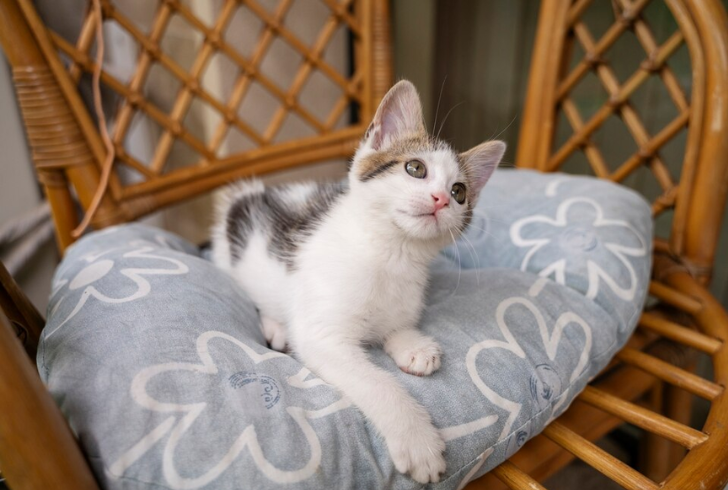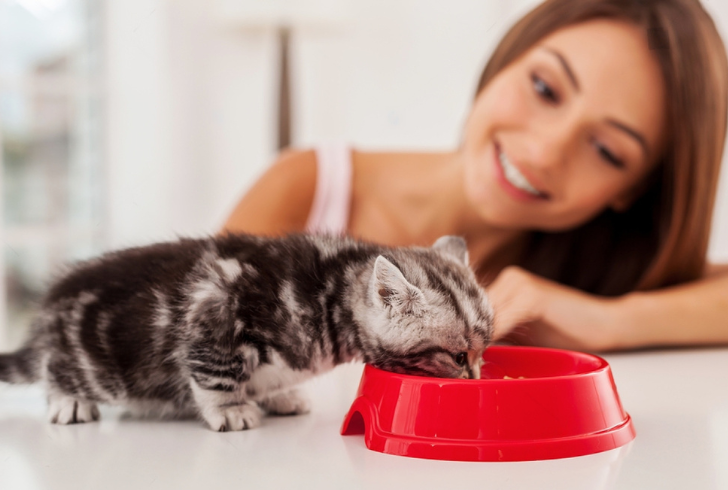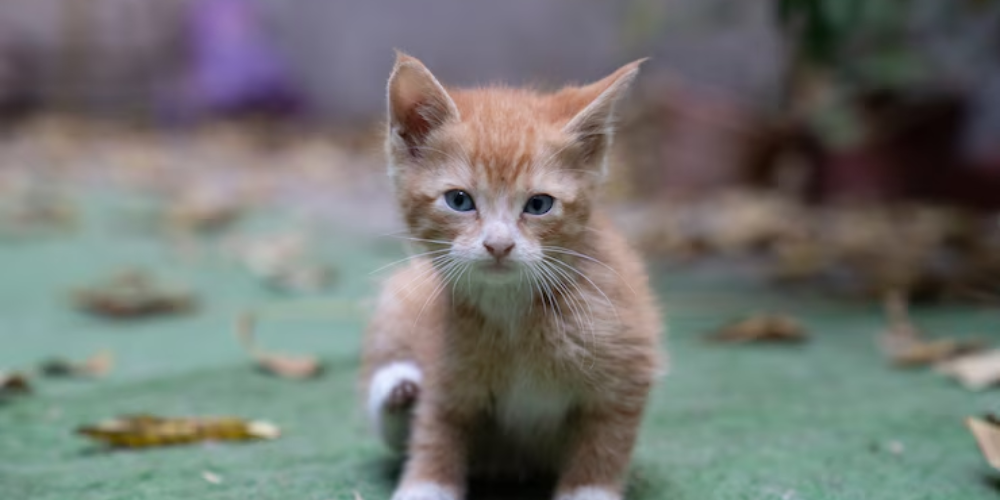Discovering a kitten that appears to be abandoned can be a distressing experience. Knowing how to take care of a kitten without a mother is crucial for ensuring its survival and well-being.
By following these practical steps, you can provide the right care and support until you can seek professional veterinary help.
Key Steps for How to Take Care of a Kitten Without a Mother
1. Assess the Situation
Before acting, it’s important to determine if the kitten truly needs assistance. Observe the surroundings to see if the mother cat might be nearby. Sometimes, mothers leave their kittens momentarily to search for food or relocate their young ones. If the kitten appears to be in no immediate danger, wait and watch from a distance for up to four hours to see if the mother returns. If she doesn’t, it’s time to step in.
2. Create a Safe Environment

Freepik | Once you decide to keep the kitten, set up a safe and cozy space for her.
Once you’ve decided to bring the kitten into your care, set up a secure and comfortable space for her. Choose a quiet room where she won’t be disturbed by other pets or household noise. Prepare a cozy area using a box lined with a soft blanket. If possible, keep the room at a warm temperature to mimic the warmth of the mother cat’s body.
3. Provide Adequate Warmth
Kittens are unable to regulate their body temperature, so warmth is essential. Use a heating pad or a warm water bottle wrapped in a cloth to provide consistent heat. Make sure the heating source is covered to prevent direct contact with the kitten’s skin, which could cause burns. Warmth is crucial, especially before feeding. If the kitten seems lethargic or cold, apply a small amount of corn syrup to her gums to boost her energy levels temporarily.
4. Feeding the Kitten Properly
Feeding a kitten requires understanding her age and nutritional needs. Here’s a breakdown based on age:
For Kittens 0 to 21 Days Old
- 0 to 7 Days - The eyes are closed, ears are folded, and the umbilical cord might still be attached. Feed every 2-3 hours using a specialized kitten formula. You can find these at pet stores or veterinary clinics. For immediate needs, a mixture of raw egg yolk and unsweetened evaporated milk can serve as a temporary solution. Avoid using cow's milk as it can cause digestive issues.
- 7 to 14 Days - Eyes begin to open, ears unfold, and the umbilical cord is no longer present. Continue feeding with kitten formula, following the same schedule.
- 14 to 21 Days - The kitten starts walking clumsily, and front teeth are visible. The feeding frequency can be reduced slightly, but continue using the kitten formula.
For Kittens Over 21 Days Old

Freepik | 21 to 28 Days kitten is more active. Switch to wet kitten food mixed with water, feeding four times a day.
- 21 to 28 Days - The kitten is more active and begins exploring. Transition from formula to wet kitten food mixed with a little water, feeding four times a day. If the kitten refuses solid food, revert to the bottle until she adapts.
5. Assist with Elimination
Mother cats stimulate their kittens to urinate and defecate. Without a mother, this responsibility falls to the caregiver. Use a soft, damp cloth to gently rub the kitten’s abdomen and anal area in a circular motion to encourage bowel movements. This should be done after each feeding for kittens under three weeks old.
6. Maintain Cleanliness
While kittens generally do not need regular baths, they should be cleaned if they become very dirty. Use unscented baby wipes for gentle cleaning. Avoid getting the kitten too wet, as drying her thoroughly is essential to prevent hypothermia.
Following these guidelines on how to take care of a kitten without a mother will help ensure the kitten's health and well-being. Remember to monitor her condition closely and consult a veterinarian as soon as possible for further care and advice. If immediate care is not possible, reach out to a local animal shelter or a trusted person experienced with kittens.
By keeping these steps in mind, you can provide the best possible start for a young kitten in need.













